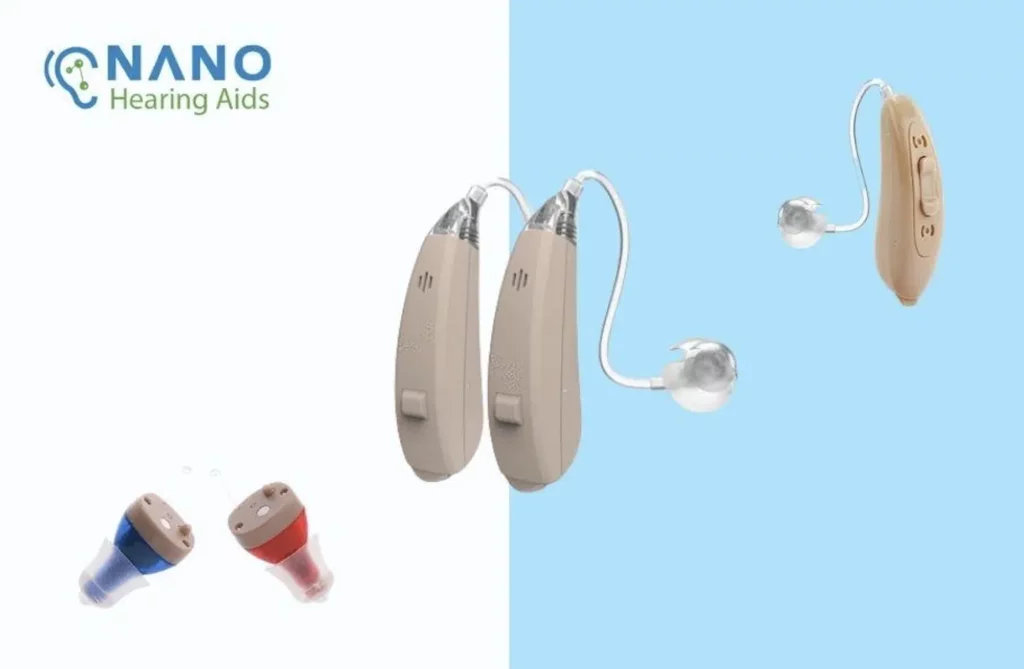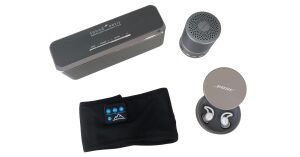Perusing the wide array of available hearing aids on the market can be pretty overwhelming, especially if you’re just getting started with looking at your options for hearing loss treatment. Among the brands who spend a lot on advertising these days is Nano, an ultra low-cost choice that can be ordered online, delivered right to your door.
But before you rush to buy them, here are some important things to know.
What You Need To Know
In 2022 the FDA finalized and published its regulations of over-the-counter (OTC) hearing aids, allowing certain hearing aids that meet certain strict criteria to be sold and fit without an audiologist or physician. The FDA guidelines provide criteria about the quality of the technology in OTC hearing aids that are meant to protect consumers. They also specify that any devices not meeting their criteria, including being registered with the FDA, should not be sold or labeled as hearing aids. Furthermore, hearing aids that are not considered OTC hearing aids are considered ‘prescription hearing aids’ and should only be fit by licensed professionals.
At this time, while Nano is registered as a company with the FDA, some of the hearing aids they sell may be registered as prescription hearing aids from a different manufacturer (Xiamen NewSound Technology Co., Ltd), and none of their hearing aids seem to be registered as OTC hearing aids at this time.
Since these hearing aids are manufactured by a different company without necessarily following the new FDA OTC hearing aid regulations, there is a greater risk of problems with these hearing aids. It is possible that the overall quality of the devices do not meet stricter OTC hearing aid standards. Additionally, it seems that the devices may be similar to cheaper amplifiers sold online under different names: for example, the Sigma+ hearing aid discussed below in this article looks to be almost the same as a much cheaper device called “Primo SA401” from Xiamen NewSound on Alibaba.com.
Since the FDA has laid out clear regulations for hearing aids, which are medical devices, it is best practice to seek out hearing aids that are fully compliant with FDA regulations to ensure you are protected from lower quality products. Furthermore, if hearing aids are deemed to be prescription hearing aids, they should be fit and monitored by a licensed professional, and not purchased over-the-counter.
Nano Hearing Aid Basics
Entering the market just five years ago, Nano hearing aids are an inexpensive choice for basic auditory amplification. They currently offer four different models.
The CIC Recharge is the simplest (and least expensive) model among their products, coming in at under $300. It is used for very basic sound amplification, and includes push button controls to lower and increase volume. Like all of Nano’s hearing aids, they come with a portable charging case for storage and power. And although they lack the features of some of the other models, they do have the benefit of fitting deep inside the ear so as to be practically invisible. Consider the Recharge a decent option for simply raising the volume.
A slightly more sophisticated model is the CIC Digital. Similar to the Recharge, the Digital has a range of app-managed features like sound amplification and the ability to adjust for ambient environmental noises. There’s also a dual microphone for better clarity and isolation of sounds, which is a nice feature depending on your usual surroundings.
A third option is the X2R Digital. Again, these are still relatively basic devices, featuring four program settings to adjust to environments that may be particularly quiet or loud, or in conversational or outdoor settings, where ambient noise can be much greater. There’s also a button on the devices to easily turn the volume up or down, as needed. Unfortunately, the hearing aid itself is more noticeable, so if you’re looking for a less visible option, the X2Rs may not be for you.
Finally, Nano’s most advanced aid is the Sigma+ Bluetooth. The only one of their hearing aids that are Bluetooth enabled, the Sigma+ is a more enhanced model that combines the features of all Nano hearing aids into one, and allows you to adjust the hearing aids with a smartphone app. A drawback is that an audiogram isn’t required for set-up, which may impact hearing (an audiogram is a graph of results from a tone hearing test so you know how loud sounds need to be at different frequencies for you to hear). Nevertheless, the app is a useful tool to support adjustments and volume.
It’s also worth noting that all Nano models come with multiple ear tips to ensure a more customized fit.
Perks
All Nanos are purchased online and delivered right to your door, making the buying process a bit more discreet.
As noted above, the Sigma+ hearing aids also include a mobile app that allows users to adjust sound for their particular needs over time. All devices are entitled to 24/7 customer support to troubleshoot issues.
Lastly, each device comes with a 45-day trial period, as well as a full year warranty as you get used to your new aids.
Price
Perhaps the most attractive aspect of the Nano is its price. Ranging from just $300-600, the hearing aids cost up to 90% less than comparable brands, while still retaining many of the customer support and app-based benefits.
Drawbacks
As with all direct-to-consumer devices, one of the more challenging issues that people may encounter is the lack of hands-on professional fitting and guidance. Care and counsel from a support team is available throughout the lifetime of the product, but it does not seem that licensed professionals are involved in direct support of the care.
A major drawback of Nanos is that their website provides misleading information about their hearing aids. While their hearing aids may be registered with the FDA, it does not seem that they are being sold in accordance with the regulations overseeing this class of prescription hearing aids. Prescription hearing aids are required to be fit by licensed audiologists or hearing aid dispensers, which Nano claims to ‘cut out’ of the process. Prescription hearing aids actually have less strict standards on them compared to OTC hearing aids, because licensed professionals are expected to have care over the prescription devices. Therefore, you may not be getting a quality product that can meet your needs.
Another weakness of these hearing aids is that Nano Hearing Aids itself has received numerous complaints online and poor reviews regarding the quality of its devices and its customer service. They are not BBB accredited and have numerous complaints lodged against them through the BBB.
Finally, the fact that these hearing aids are manufactured by another company, re-labeled, and likely sold cheaper elsewhere, means that the cost of these hearing aids may still not be worth it, even though they cost less compared to traditional hearing aids.
Talking To Your Doctor
As we remind readers in all of our work, it’s essential to include your doctor in any medical decision – including hearing aids. Not only can they give you more insight on your own ear health to help you navigate decision-making, they’re generally up to speed on a rapidly evolving market. New technology means new ways to care for your ears. Before you make a decision about which device is right for you, consider running it by your clinicians. It never hurts to have another health ally in your corner.

















